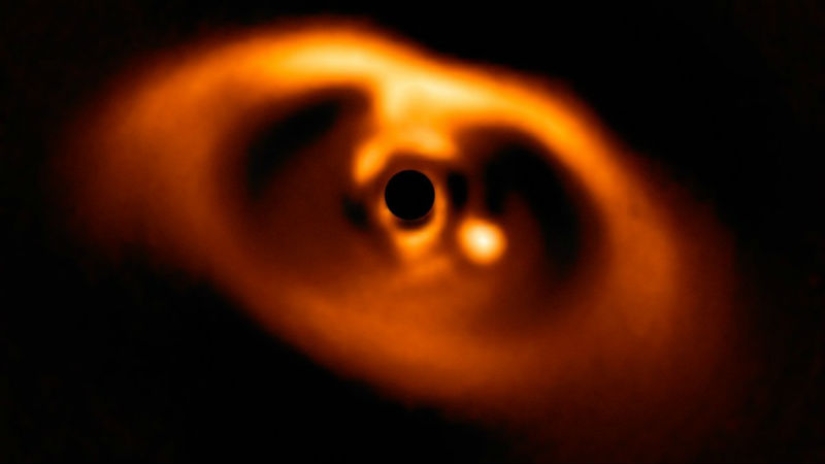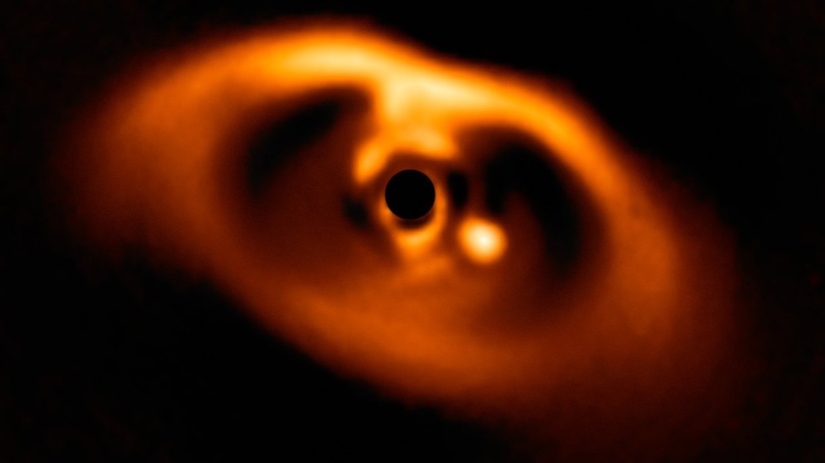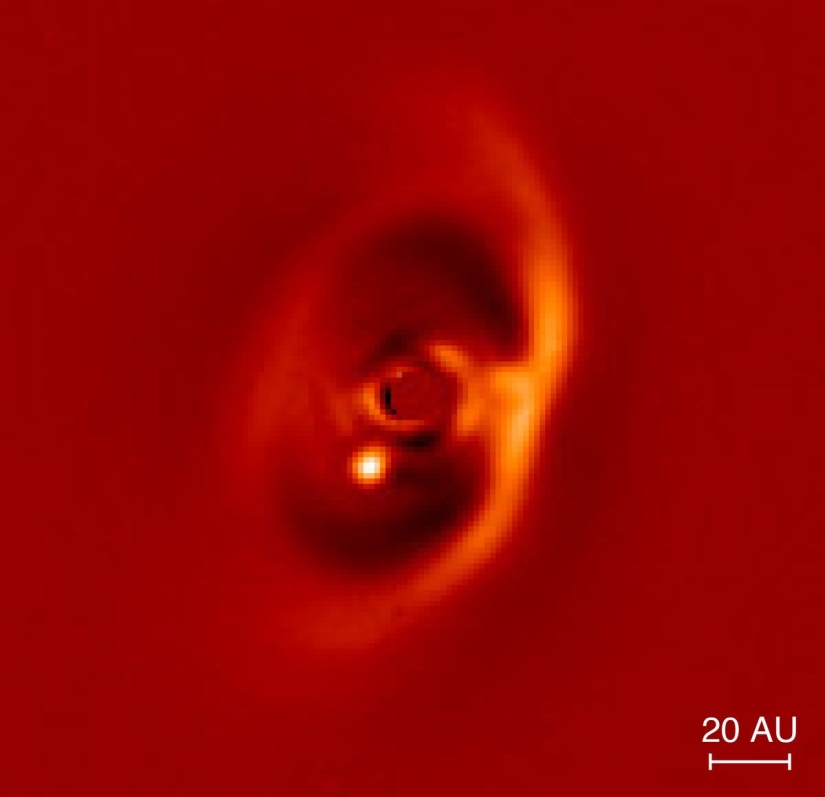Scientists managed to capture the birth of the planet for the first time
Astronomers of the European Southern Observatory managed to take a clear picture of the formation of a young planet in the constellation Centaur for the first time. The frame was taken on a "Very Large Telescope" (Very Large Telescope).
The image shows a young planet (a luminous spot) at the stage of laying its path through the so-called disk of matter around the young star PDS 70. The celestial body is located at a distance of 370 light-years from Earth.
Miriam Keppler, the head of the study and an astronomer from the Max Planck Institute for Astronomy, said: "These disks around a young star are the birthplaces of planets, but so far it has been possible to film something resembling the birth of a planet only a few times."

Source: Mashable
Scientists filtered the brightness from the planet's star using a coronagraph. Keppler also explained that they had long suspected that a young planet was being born near this dwarf star. They confirmed their guesses with the help of SPHERE, a "Very Large telescope" instrument for searching for planets, which continuously photographs a star for several hours and then, using complex algorithms, identifies objects surrounding the star. "Sphere" also gave information about the atmosphere of the young planet.


Keywords: Astronomy | Stars | Planets | Birth | Scientists
